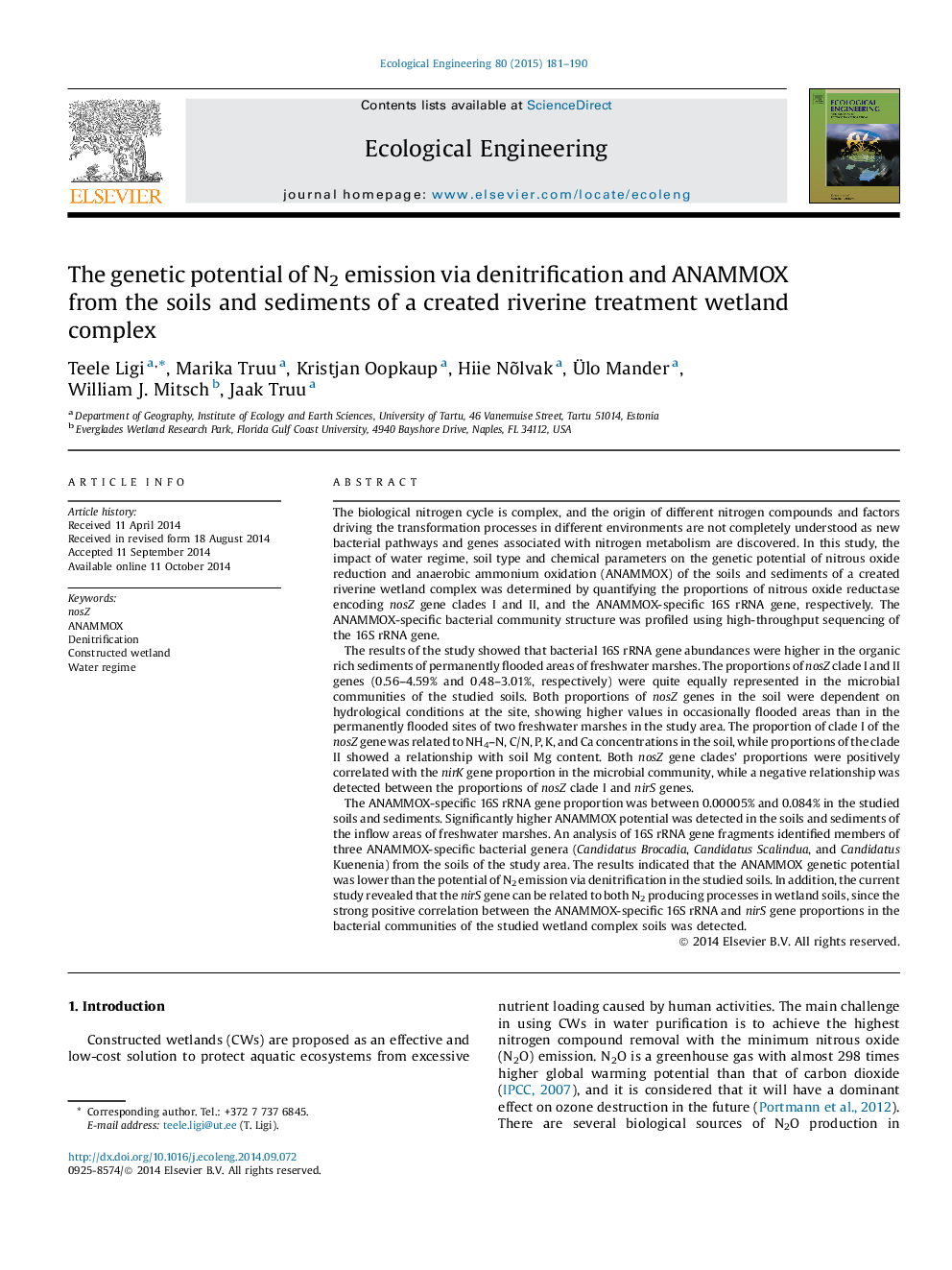| کد مقاله | کد نشریه | سال انتشار | مقاله انگلیسی | نسخه تمام متن |
|---|---|---|---|---|
| 4389044 | 1618019 | 2015 | 10 صفحه PDF | دانلود رایگان |

• NosZ gene clades I and II were similarly represented in the studied soils.
• Total nosZ gene proportions were greatest in permanently flooded areas.
• ANAMMOX gene proportions were highest in the inflow areas of freshwater marshes.
• Genus Ca. Brocadia, Ca. Scalindua, and Ca. Kuenenia were detected in the soil samples.
• NirS genes were related to the ANAMMOX process in riverine complex soils and sediments.
The biological nitrogen cycle is complex, and the origin of different nitrogen compounds and factors driving the transformation processes in different environments are not completely understood as new bacterial pathways and genes associated with nitrogen metabolism are discovered. In this study, the impact of water regime, soil type and chemical parameters on the genetic potential of nitrous oxide reduction and anaerobic ammonium oxidation (ANAMMOX) of the soils and sediments of a created riverine wetland complex was determined by quantifying the proportions of nitrous oxide reductase encoding nosZ gene clades I and II, and the ANAMMOX-specific 16S rRNA gene, respectively. The ANAMMOX-specific bacterial community structure was profiled using high-throughput sequencing of the 16S rRNA gene.The results of the study showed that bacterial 16S rRNA gene abundances were higher in the organic rich sediments of permanently flooded areas of freshwater marshes. The proportions of nosZ clade I and II genes (0.56–4.59% and 0.48–3.01%, respectively) were quite equally represented in the microbial communities of the studied soils. Both proportions of nosZ genes in the soil were dependent on hydrological conditions at the site, showing higher values in occasionally flooded areas than in the permanently flooded sites of two freshwater marshes in the study area. The proportion of clade I of the nosZ gene was related to NH4–N, C/N, P, K, and Ca concentrations in the soil, while proportions of the clade II showed a relationship with soil Mg content. Both nosZ gene clades’ proportions were positively correlated with the nirK gene proportion in the microbial community, while a negative relationship was detected between the proportions of nosZ clade I and nirS genes.The ANAMMOX-specific 16S rRNA gene proportion was between 0.00005% and 0.084% in the studied soils and sediments. Significantly higher ANAMMOX potential was detected in the soils and sediments of the inflow areas of freshwater marshes. An analysis of 16S rRNA gene fragments identified members of three ANAMMOX-specific bacterial genera (CandidatusBrocadia, CandidatusScalindua, and Candidatus Kuenenia) from the soils of the study area. The results indicated that the ANAMMOX genetic potential was lower than the potential of N2 emission via denitrification in the studied soils. In addition, the current study revealed that the nirS gene can be related to both N2 producing processes in wetland soils, since the strong positive correlation between the ANAMMOX-specific 16S rRNA and nirS gene proportions in the bacterial communities of the studied wetland complex soils was detected.
Figure optionsDownload as PowerPoint slide
Journal: Ecological Engineering - Volume 80, July 2015, Pages 181–190